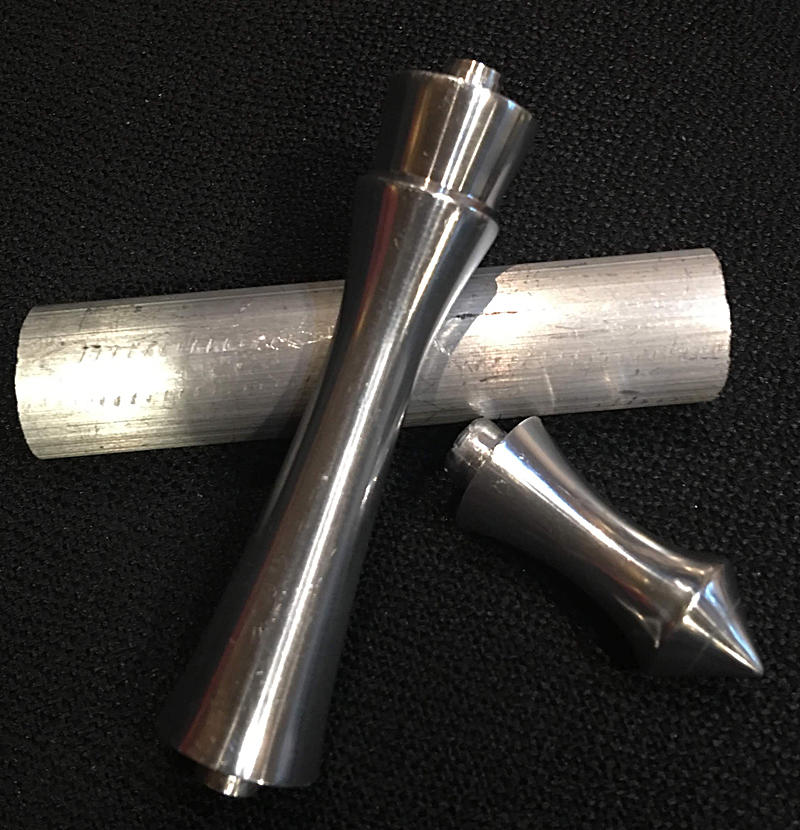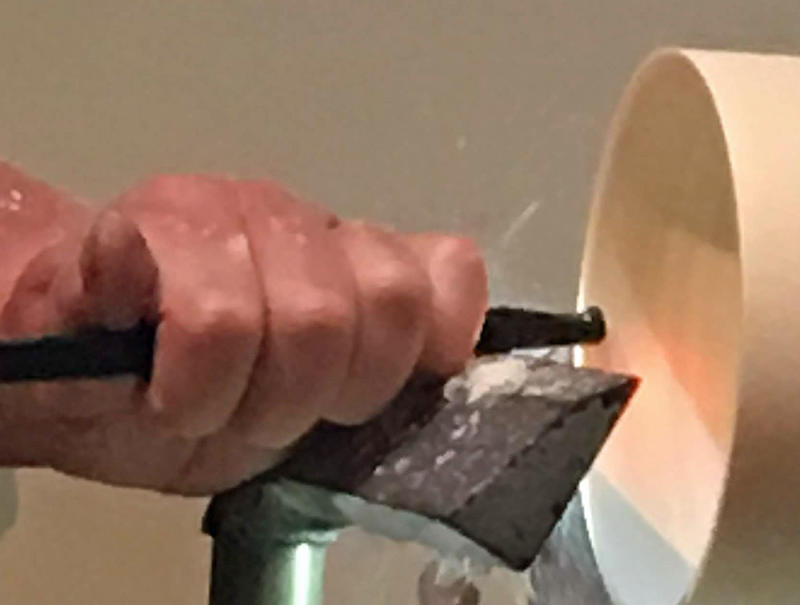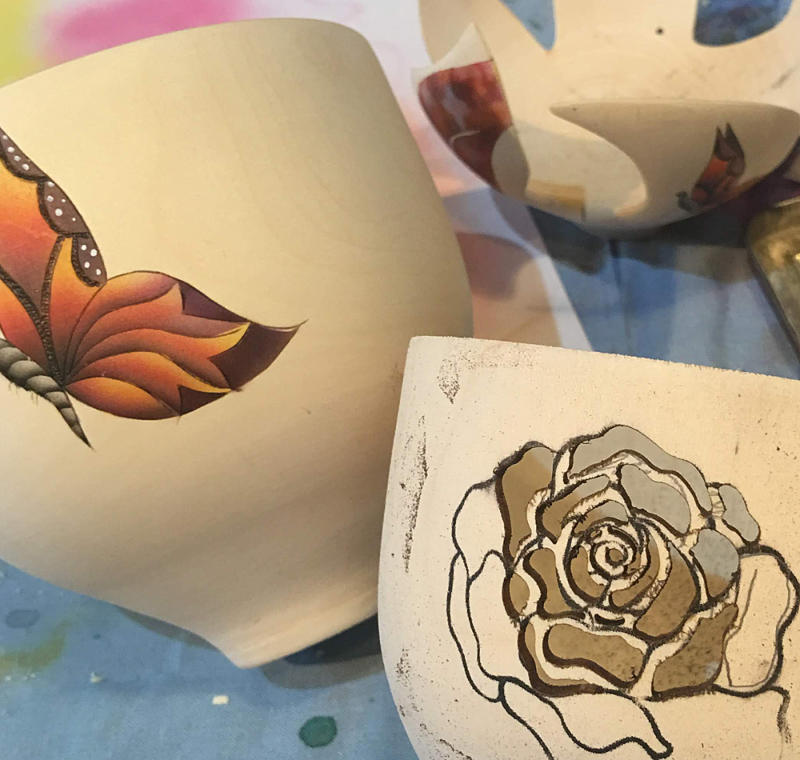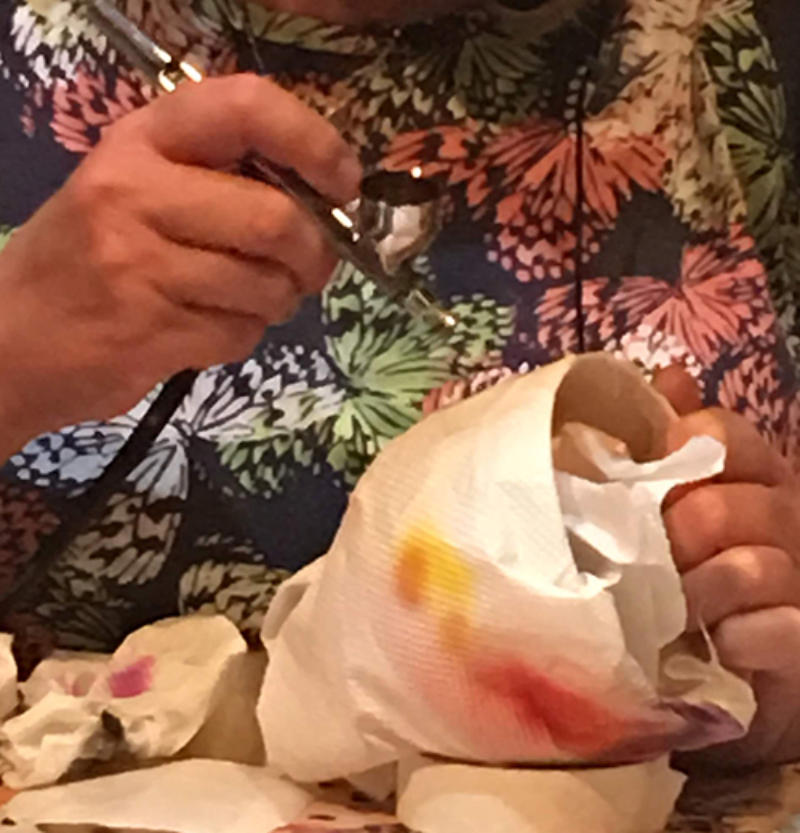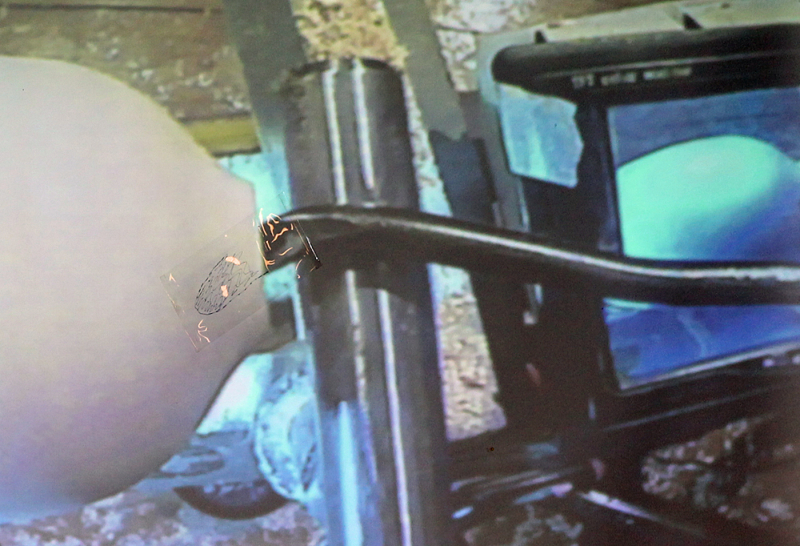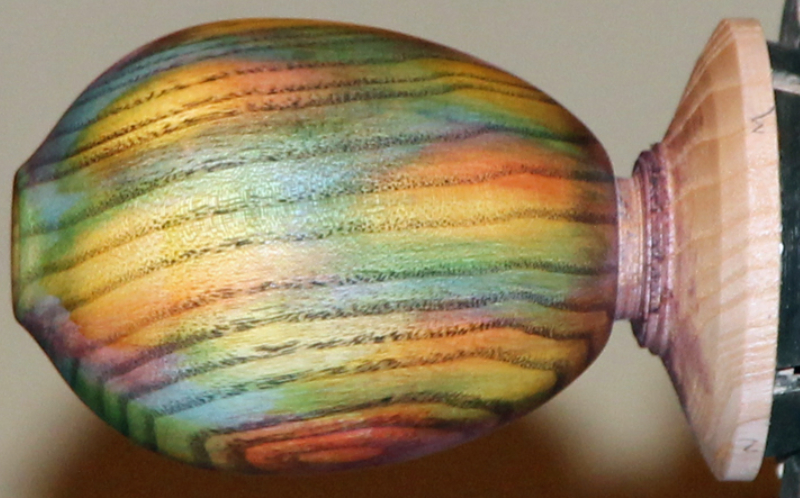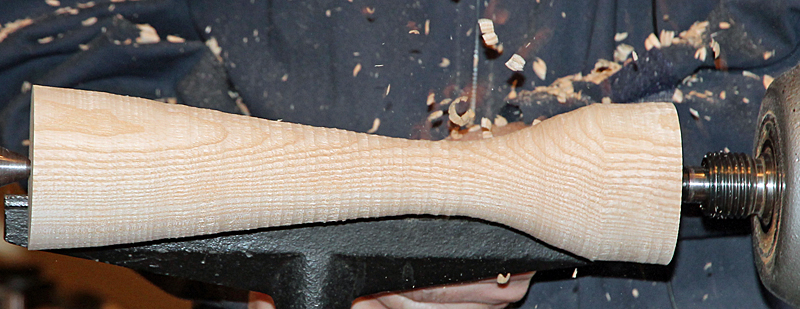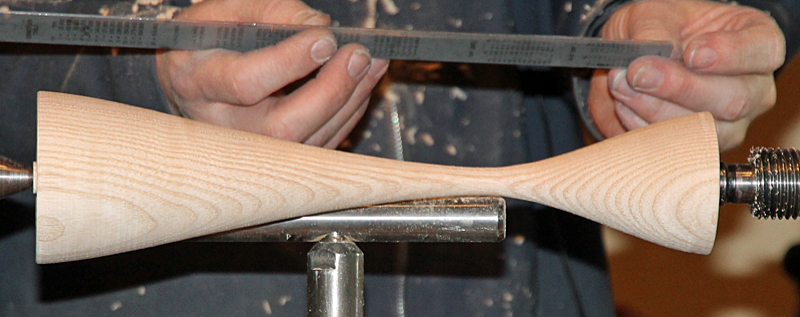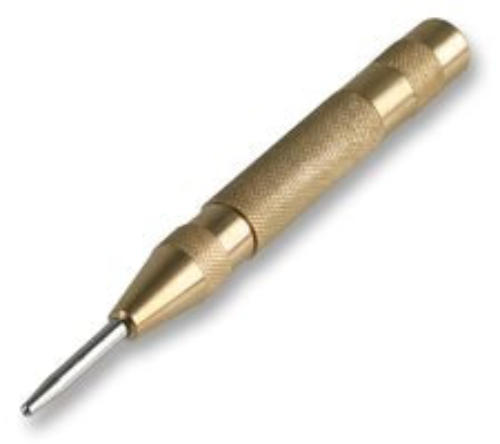Coloured, beaded box with aluminium finial
with Rick Dobney
Rick nobly stepped into the breach when Andrew Hall, who was booked for the evening, became ill and was unable to come. Rick gave us an excellent and fascinating evening’s entertainment, even if we did have to miss the musical interlude!
The box had an aluminium finial and was beaded and coloured, all of which Rick completed in under the allocated time – a remarkable undertaking. He started by turning the finial out of 15mm aluminium bar, using Molyslip cutting compound to lubricate the cutting tools and a collet chuck to hold the bar and finishing it off with Autochrome polish (NOTE: details of materials and equipment used can be downloaded here).
He then turned the box, parting through and turning lid interior before mounting and turning the base. The lid was tightly refitted to the base and the top drilled to the width of the finial spigot. The beading area was marked with a clever trick taping 2 pencils together at the required width. The beads were turned, always holding the spindle gouge perpendicular to the wood.
The box was then coloured with Chestnut spirit dyes and an airbrush, starting with the darkest colour first, making sure the deepest part of the beads was coloured then sanding back the top of the beads and colouring with two other colours. The whole piece was finished off with a spray of yellow dye to brighten the colours. The base was mounted in a jam chuck to remove the bottom of the box.
We had a really good turnout for the evening and Rick’s demo was appreciated by all and thanks again to Rick for standing in at such short notice.


